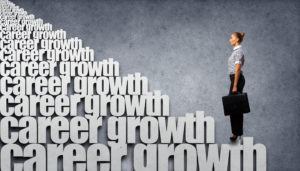It would be far too easy to simply add some diverse people to a candidate list to be “politically correct.” Or one could include people on the slate, who if they got the job would certainly be set up to fail. But instead of these two superficial fixes, we should do the deep work of analyzing the systemic issues in the organization that have created this scarcity of diverse top leadership talent.
One of the most important resources that can be provided is top notch deep minority leadership coaching that helps diverse people grow skills to lead in that difficult environment where they are in a minority and leading mostly people different from themselves. One such seasoned and excellent experienced coach who I have called on to provide this guess blog is Mr. Val Boston of Boston and Associates LLC. Val writes:

One on one professional career coaching is often a critical piece in career progression and talent development.
Characteristics and Challenges of Successful Coaching Interventions
Executive coaching (or employee coaching or leadership coaching) is certainly not a new concept. Effective coaching occurs when the coach and the colleague have mutual trust and respect; where communications clear and understood by all parties simultaneously; when the colleague is well on track to achieving their professional goals; and the colleague is “dialed in” into the controllable behaviors that generate success.
Most challenges arise with coaching interventions because the market changes are more rapid and unpredictable than ever before; dramatic events may compromise the integrity of the coaching intervention; the continued “buy-in” by the colleague may become out-of-sync and no one understands why; and when basic objectives are not being met.
Why Minority Executive Coaching?
SCENARIO: Jordan is a talented employee who is from a HUG. He has outstanding educational credentials and has an excellent employee track record to date. He is assigned an internal mentor or coach as part of his professional development who is not from his HUG. Though the mentor/coach can provide guidance and direction, the personal relationship and trust needed may not develop that would give Jordan all the “tools” he needs for further growth in the organization. The coach may not be able to provide him with the “unwritten rules” or truly and deeply be able to relate to Jordan at all levels.

Minority Coaching is often a critical tool for assuring career progression of underrepresented communities.
Our Approach:
Boston and Associates LLC uses a practical, proven coaching model to effect change and improve performance, with an insight based approach.
• Step One: Establish the Coaching Relationship
• Step Two: Assess the Situation
• Step Three: Define Desired Outcomes
• Step Four: Determine & Commit to Take Actions: Determine Possible Actions, Identify Obstacles/ Enablers & Commitment to Take Action
• Step Five: Follow Up/Measure Success
• Step Six: Ongoing Coaching
Coaching increases employee motivation, develops talent for long term high performance, helps to create a source of competitive advantage, and helps to attract and retain the best talent. The successful executive coaching program results in leaders or employees who are more sensitized, better able to communicate, more open to personal growth, as well as overall greater productivity, engagement and job satisfaction that significantly benefits the entire organization.
Val can be contacted at [email protected]
Website: http://www.bostonandassociates.com/
Phone: 336-202-3348



